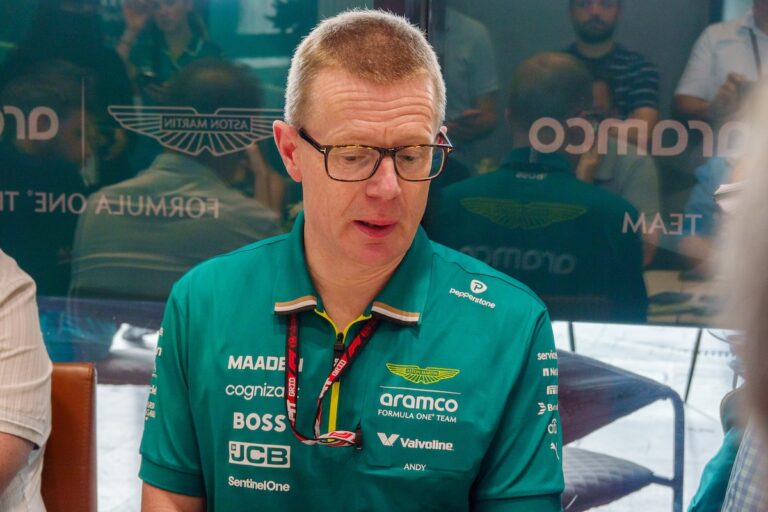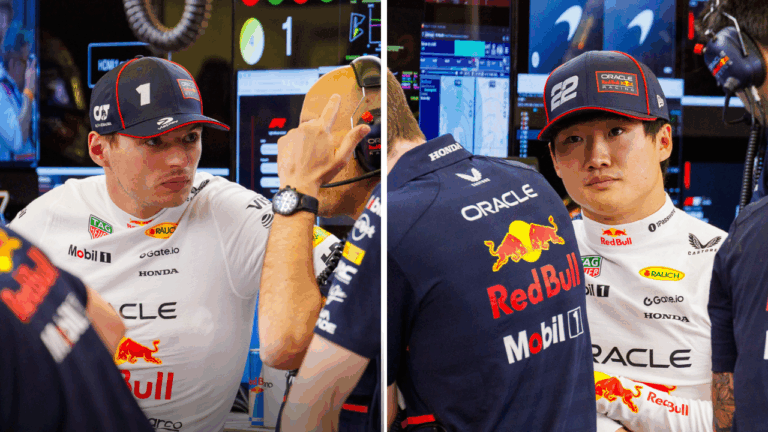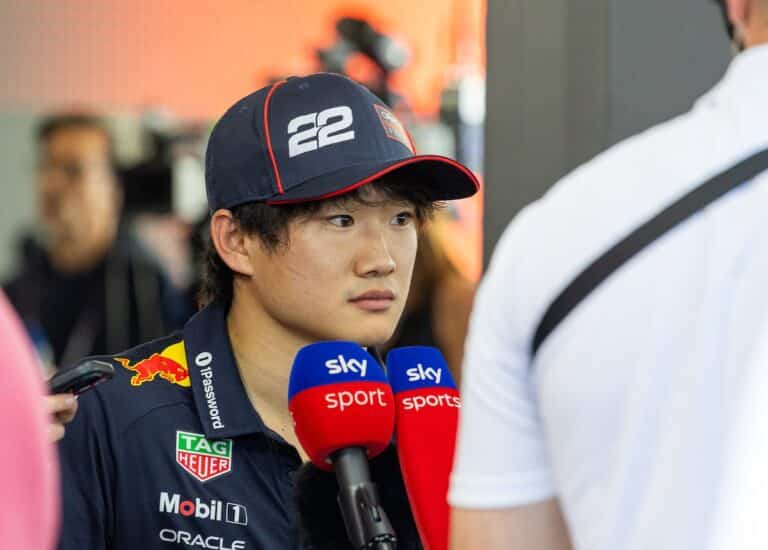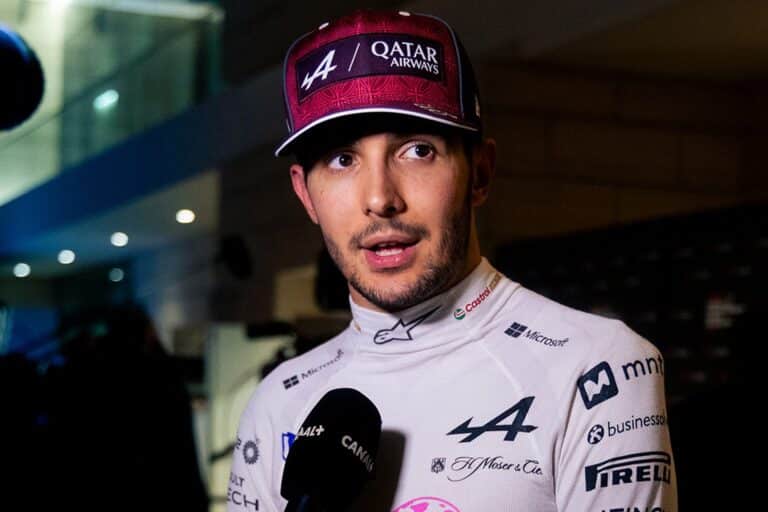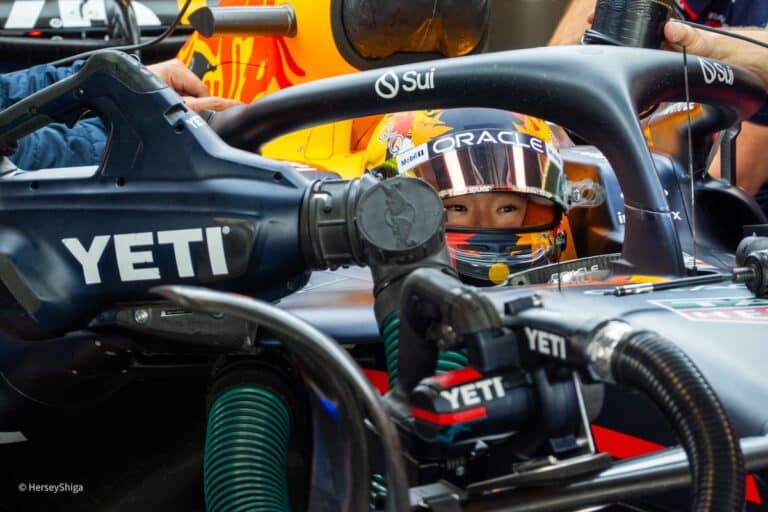“Haas F1 Leaves Miami Empty-Handed as VF-24 Struggles Continue”
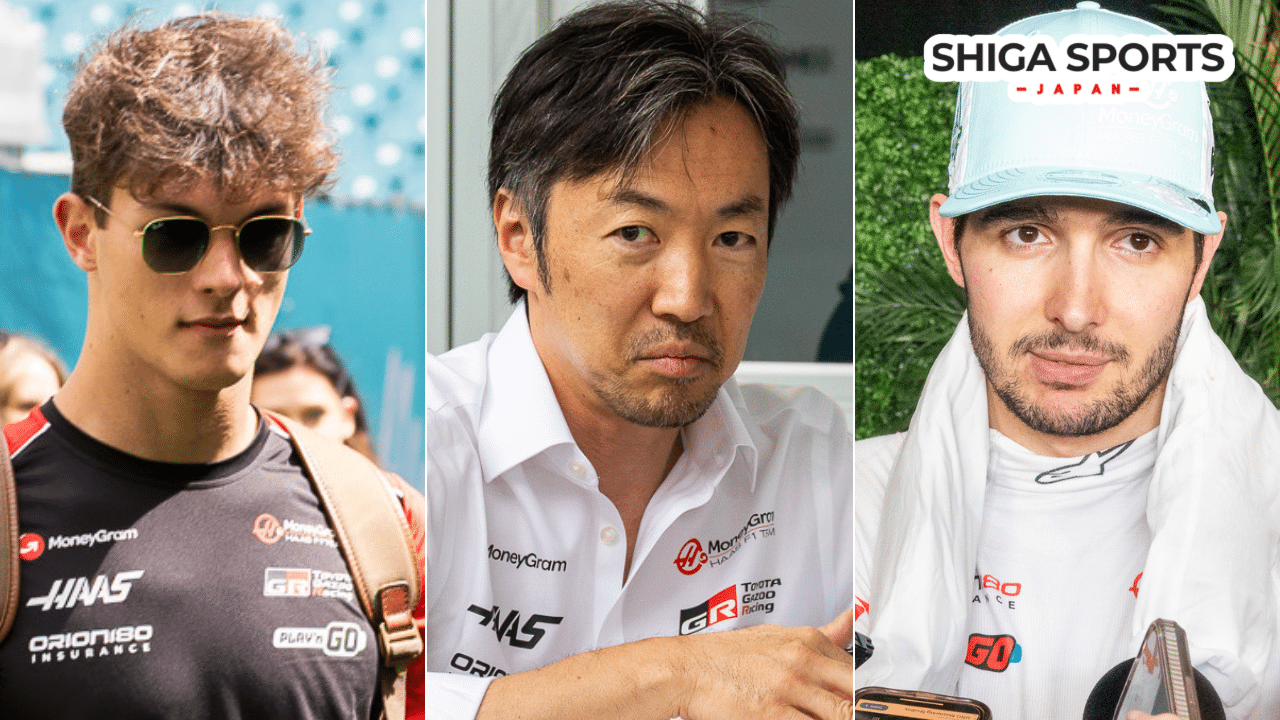
FRUSTRATING! is the best described summary for Haas Performance after the Miami Grand Prix.
With Williams now firmly holding P5 in the Constructors’ Championship, the battle for the remaining midfield positions is intensifying—though it comes with the discouraging reality of scrapping for the few points left behind by the top five teams.
Haas remains a strong contender for P6, closely matched with VCARB, but the American outfit in partnership with Toyota Racing Gazoo continues to struggle with consistently interpreting aerodynamic data and understanding the VF-24’s unpredictable behavior.
The Miami Grand Prix once again exposed Haas’s persistent challenges, with zero points scored and more questions raised than answered—leaving little optimism among F1 experts for a meaningful turnaround in the second half of the season.
But not all hope is lost. Haas remains determined to fight on, backed by strong team spirit, great leadership and a driver pairing that continues to earn high praise from team principal Ayao Komatsu.
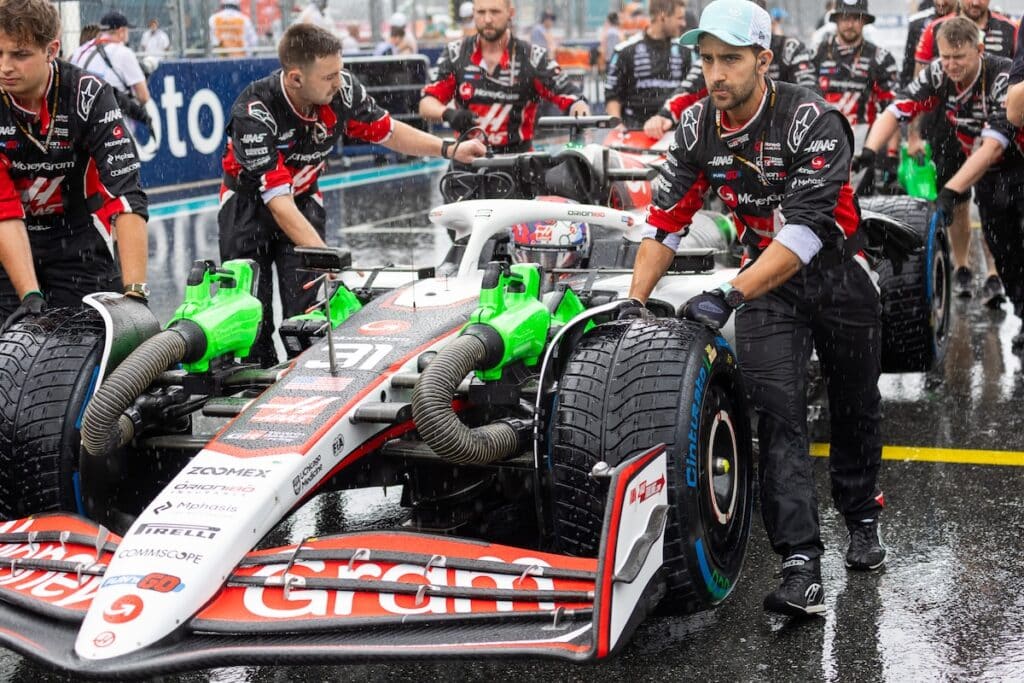
Miami Frustrating Results for Haas
Esteban Ocon made a strong start to Sunday’s race in Miami, managing to hold off the Ferrari of Lewis Hamilton for over 20 laps in a solid defensive drive.
However, like Yuki Tsunoda, Ocon was unlucky with the timing of the unexpected Virtual Safety Car, which allowed Hamilton to benefit from a cheaper pit stop and jump ahead. This left Ocon fighting with Isack Hadjar for the ungrateful position of P11, with the Frenchman ultimately finishing in P12—matching his result from the Sprint a day earlier.
Ocon showed competitive pace, running similar lap times to Hadjar for much of the race. But in the final stint, he experienced a noticeable drop in performance and was unable to maintain position. After the race, he summed up his experience in a single word: “frustrating.”
Esteban Ocon COMMENTS:
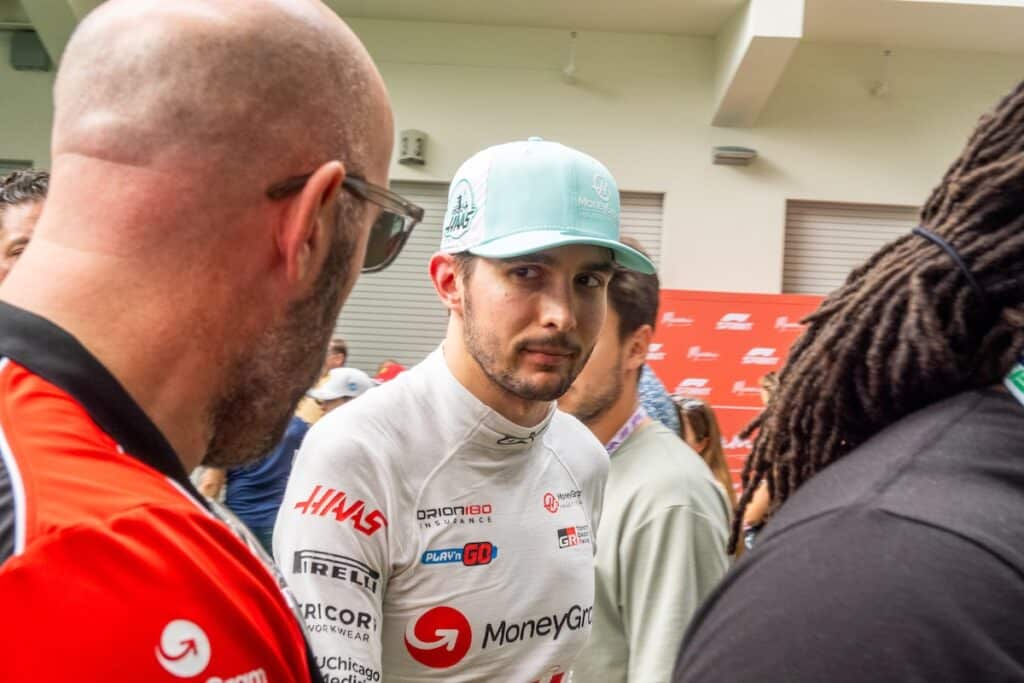
“It was a solid race on our side but unfortunately, we lacked a bit of pace to be fighting with the quicker guys in front. We didn’t get very lucky as we didn’t pit under VSC, had a couple of fights but they always ended the same way, so that was a bit frustrating. I think overall it’s been a strong weekend from the team and we need to keep that going once we find a bit more performance in the car. We’ll keep at it, there are some good learnings from this weekend, and some good expectations for the upcoming races, so I’m looking forward to it.”
For Oliver Bearman, the race ended in even more disappointment after a power unit failure that Ferrari has yet to fully explain. Starting from P20, the Haas rookie made impressive progress early on, climbing to P12 during the opening stint and showing some potential to fight for points.
That momentum was cut short on lap 27 when smoke and flames began to pour from the exhaust, forcing him to retire the car just off track. Bearman’s retirement triggered the second Virtual Safety Car of the race and left him classified in P19 at the Miami Grand Prix.
Ollie Bearman COMMENTS:

“It was going okay but I spent a good chunk of time in a DRS train, which obviously wasn’t ideal for the tires. I think we had some pace but not enough to be in the points. We need to review what happened, I lost drive, and it’s unfortunate that we weren’t able to finish the race. I take away the positive that our pace and performance in the Sprint was competitive, and we move on to the next.”
After the race Ayao Komatsu had this to say about the team’s performance in Miami:
Ayao Komatsu, Team Principal COMMENTS:
“Today’s been quite a tough race. With Ollie starting from P20, we tried to go forwards as much as possible but we had a PU failure, so that was the end of his race. Esteban’s first stint was okay – he was fighting against Hamilton pretty well and held him back for as long as he did, so he drove well – but we didn’t get our pit stop timing correct so we got undercut by Hadjar. That ruined it as in the second stint we couldn’t overtake him, which killed the tires.”
“There’s plenty of things that we need to understand, today’s race pace and decision making because the pit stop didn’t work, so we need to learn as a team and then put it right in Imola.”
Painful Miami Analysis with Hope left
Inside the paddock, Haas continues to baffle F1 observers. The team regularly swings between fighting for points in the top 10 and languishing near the back of the grid on alternate weekends. What’s more perplexing is that the fluctuation appears to alternate between drivers—Esteban Ocon and Oliver Bearman—resulting in extreme and unpredictable performance volatility. From the outside, it almost seems as if they draw lots before each Grand Prix, operating on entirely different setup programs that leave one driver competitive while the other struggles—an unusual pattern, especially for a seasoned driver like Ocon.
Ahead of the Miami Grand Prix, team principal Ayao Komatsu had already flagged the VF-24’s key weaknesses, which were exposed yet again during the weekend. The team entered Miami with lowered expectations following a disappointing showing in Saudi Arabia, where the car was clearly unsuited to the high-speed layout of the Jeddah Corniche Circuit.
Speaking to the media before the race, Komatsu acknowledged that the VF-24 is highly sensitive to circuit characteristics—particularly high-speed corners, bumps, and rapid direction changes. Komatsu on car issues:
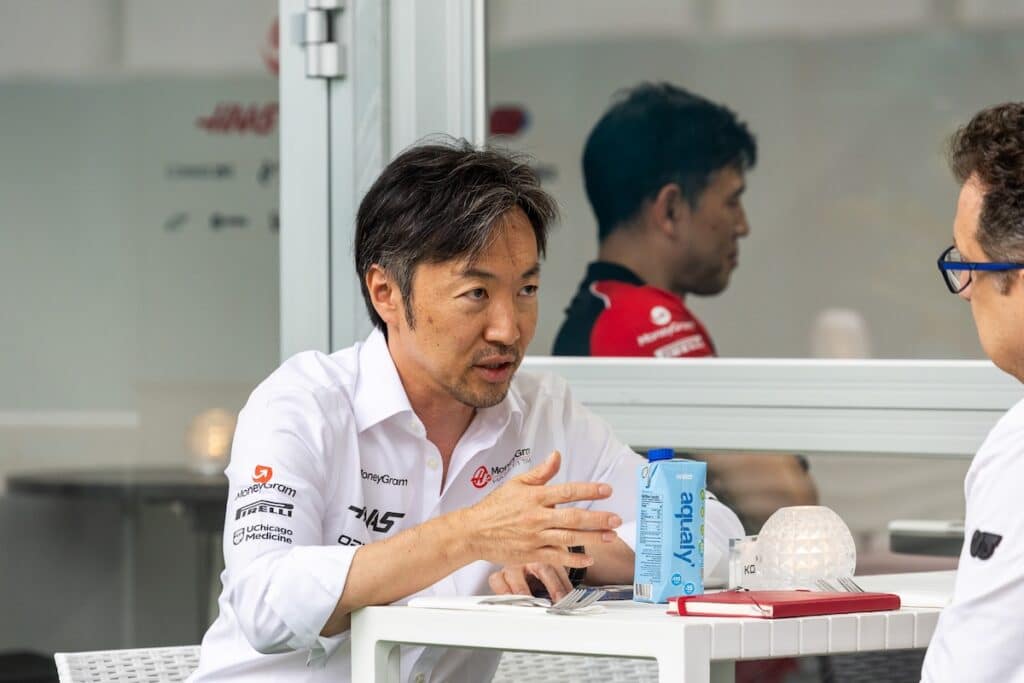
“The problem area is at high speeds—undulations, bumps, turns. Anything related to high speeds is always a concern.”
Despite encouraging results in Shanghai and Suzuka, Komatsu emphasized that the car’s issues are far from resolved.
“I don’t think we understand it all,” he admitted. “There are still questions about how aerodynamics causes problems.”
He added bluntly: “If the car could perform a little more consistently, then I would know what to expect…”
In other words, Haas is often going into race weekends blind, unable to predict how the car will behave from circuit to circuit. This severely limits their ability to optimize setup in advance, forcing the team into reactive adjustments under intense time pressure.
As a result, Haas appears to be running two distinct setup programs during each race weekend—one for each driver—in an attempt to gather broader data and better understand the VF-24’s unpredictable nature. It’s a high-risk approach, particularly with strong competition from midfield rivals like VCARB and Alpine.
In this context, the performance swings and late adjustments seen at recent races reflect a team still very much in the process of catching up.
If there’s a silver lining for Haas, it’s that the VF-24 shows a stronger base pace than rivals like Sauber—and now Aston Martin—each race weekend.
Another key asset is the team’s driver lineup. Both Esteban Ocon and Oliver Bearman have emerged as consistent positives amid the ongoing challenges, bringing professionalism and commitment to the team. Even Ocon—once known as something of an enfant terrible in the paddock—has matured into a dependable, experienced figure, proving to be a strong team player and collaborating effectively with the much younger Bearman. Komatsu on his driver pairing:
“It’s fantastic—exactly what I expected,” he said. “The fact that their driving styles and feedback are a bit different, especially with a car like this, really helps the team.”
More Optimism for Imola
The outlook for Haas in the battle for P6 in the Constructors’ Championship remains uncertain—and increasingly reliant on Alpine and VCARB continuing to make mistakes, as both teams have already done this season. With the top five positions firmly locked down and Williams now out of reach in P5, the remaining points available to midfield teams are few and far between.
Based on data from Miami, VCARB currently appears ahead of Haas in the performance rankings. The only certainty is that both Sauber—and surprisingly, Aston Martin, despite having Fernando Alonso—sit at the bottom of the current power rankings.
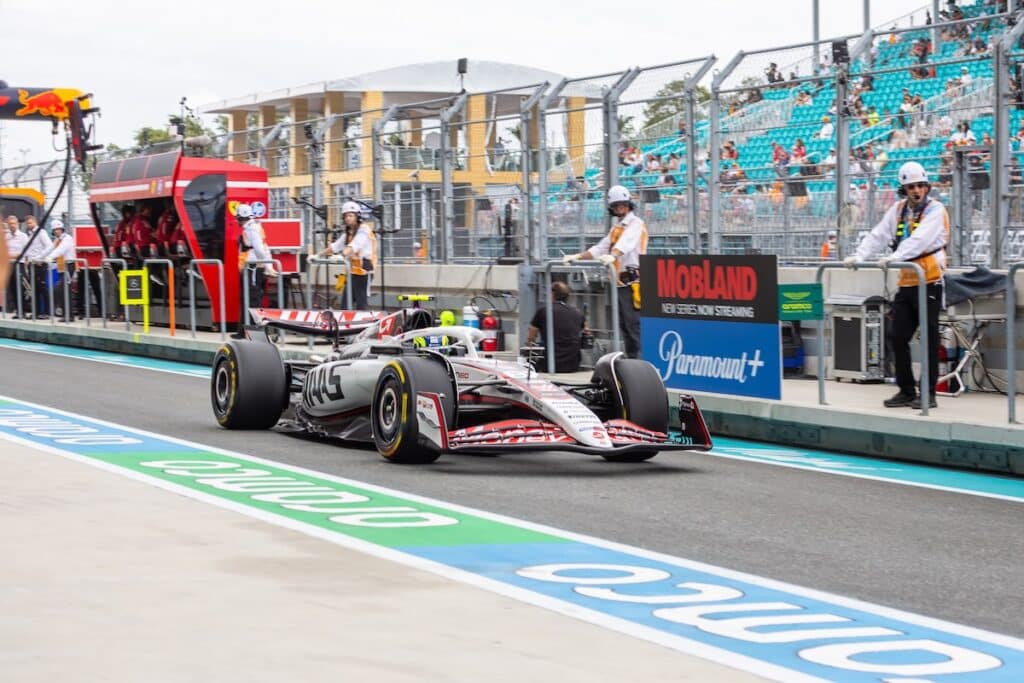
Alpine’s internal distractions, including a team principal shake-up and the mid-season promotion of Franco Colapinto, may offer Haas a narrow window of opportunity to pull ahead of at least one direct competitor. But there is very little margin for error, and Haas needs to be ready to capitalize whenever its direct rivals slip up.
Looking ahead to Imola, the circuit’s lower proportion of high-speed corners—compared to Jeddah and Miami—could favor the VF-24. Haas is also set to bring a significant upgrade package to the Italian round, and the outcome may help shape the team’s development path not only for the rest of 2025 but potentially for 2026 as well. Komatsu on future focus:
“After Imola we have to make a decision: do we stay fully focused on competing this year or do we move earlier to 2026?”
He added, “If I can get that consistency then I think I can compete in midfield regularly. Whether I can achieve that remains to be seen.”

